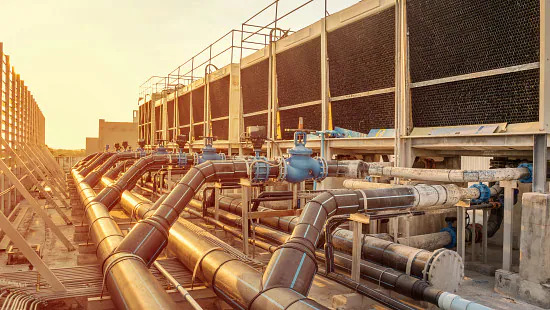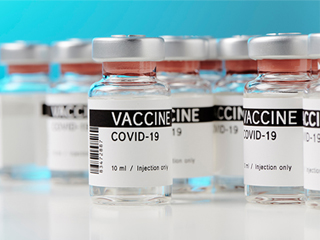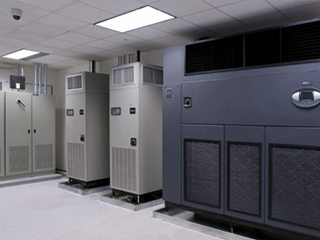Data center cooling systems consume vast amounts of energy. Large scale cooling systems also use water as an essential resource. Combined the environmental impact from these cooling systems is huge. Hence, it is a concern among data center operators, the government and public to ensure these resources are used efficiently. The energy demand, and thus cooling demand, for data centers is only going in one direction, and that is up. As technologies like cloud services and edge computing continue to emerge and the COVID19 pandemic shifts people to working from home it has accelerated the need for data center infrastructure. The Internet of Things (IoT) and Artificial Intelligence (AI) also contribute to this growing demand.
Of course, businesses want to have the most efficient systems in their facility. Efficiency increases revenue and facilitates the delivery of high-quality service. With the increasing call for sustainable technology and practices, businesses are looking for cooling systems anchored on sustainability. While maintaining or even increasing efficiency in the facility.
Cooling Trends In The Data Center
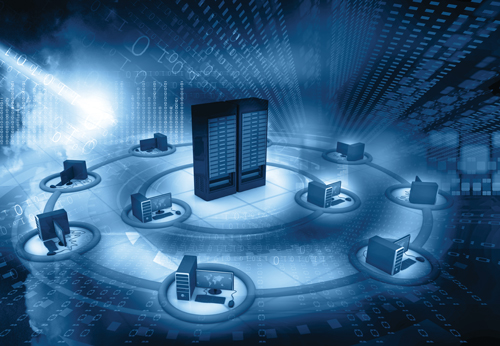
Photo Credit: www.scientific-computing.com
In the past few years, there have been many developments in data center cooling. Sustainability is the forefront concern in the data center industry. According to Grand View Research, the worldwide data center cooling market is expected to reach $20.7 billion by 2025. This amounts to a combined annual growth rate of 13.5%. Cooling systems consume 30% of the total energy consumption of a facility. Hence, there is a greater need to find and switch to more energy-saving cooling solutions.
-
Utilizing Eco-Friendly Cooling Solutions
Methods like free cooling are a big help both to the environment and to a business. Businesses that utilize this method can save up to 80% on cooling costs. But be sure to incorporate the appropriate cooling system for your facility. Check if your infrastructure matches the cooling system you would like to switch to.
-
Getting Rid of Mechanical Cooling
In the past few years, some big companies have removed mechanical cooling in their facilities. In 2015, Digital Realty built a 6MW data center in London without mechanical cooling. It is now operated by data center provider Rackspace. This data center was the first to have no mechanical cooling in the UK. In 2020, the Japanese company NTT followed in its footsteps. They opened a data center without mechanical cooling also in London.
The rationale behind this big adjustment is simple. Businesses would like to reduce energy consumption by removing heat from the IT load. Before, data centers would have ACU that consume the same amount of energy as the racks and servers themselves. But things have changed since energy consumption became a major concern.
Now, data centers aim to remove wasted energy in cooling or eradicate it if possible. PUE is directed towards 1.0. One way to do this is by replacing ACU with passive cooling methods. In turn, it can reduce the cooling system energy consumption by as much as 80%.
Removing mechanical cooling has many other benefits as well. It cuts down material costs. It also cuts down the use of refrigerants that contribute to potent greenhouse gases. Note that this method may not apply to all facilities. Especially data centers in warm or humid areas.
-
Switch To Water-Saving Cooling Solutions
Water scarcity has always been a pressing concern in the world. Much more in the data center industry. Facilities located in warm or humid areas tend to consume more water for cooling. It also leads to higher cooling expenses. Businesses need to reassess their water consumption. Look for alternative cooling solutions that can reduce their consumption.
Some businesses are focusing on finding ways to make their cooling systems reduce water dependence. Other data centers are also looking for freshwater sources. As well as municipal wastewater supply. Building a data center in cold areas also helps lessen cooling needs.
-
Utilizing Artificial Intelligence (AI) For Cooling
In 2016, Google started to develop AI for data center cooling. They are the pioneers of this innovation in the data center industry. Google’s AI for cooling system uses sensors. These sensors collect data every five minutes. Then, the algorithm predicts how the cooling systems’ current performance will bring benefits and disadvantages in energy consumption.
AI is most beneficial in data center cooling. It can enhance temperature control. In turn, this reduces energy consumption in cooling. It can also predict the cooling system’s performance in the future. Allowing operators to take proactive steps in eliminating possible risks. As well as improving the cooling system’s overall performance.
-
Switching To High-Performance Computing (HPC)
The demand for data centers continues to rise. Prompting facilities to switch to supercomputers with high-performance computing (HPC). In the past, supercomputers were considered rare, but now they are much more common, especially for large enterprises, universities, and hyper-scale facilities. In turn, this increases IT density. As well as the heat waste generated in servers and racks.
Adding HPC units means that operators may need to add cooling as well. Like a distributed cooling system for specific racks that require extra cooling. Businesses may also opt to build an entirely distinct cooling system made specifically for HPC units.
-
Edge Infrastructures
The Internet of Things (IoT) is yet another technology that is now incorporated in data centers. IoT is used to monitor, control, and manage data center systems. IoT needs a quick response from services. This has led to the emergence of Edge data centers. These facilities are small in size and located near the source of data.
Edge data centers are still relatively new in the industry. It is likely to emerge into a wide variety of edge facilities. Like server rooms or closets in an established building. Small enclosures or even shipping container-sized installations. These types of infrastructures may simply need an AC duct. Connected to the whole facility’s cooling system. But this may still not be enough. Hence, adding a cooling system to Edge infrastructure can be challenging.
Experts suggest that liquid cooling may be the right complement for Edge infrastructures. Since liquid cooling is independent of the environment. It is also quiet and does not contribute to data center noise.
-
Hyperscale Data Centers
Hyperscaling is the way to go for large businesses. Some of the world’s biggest companies like Amazon, Google, and Facebook operate hyperscale data centers. Their facilities are huge, the size of multiple football fields.
Hyperscale facilities can be the pioneers of innovative solutions in the industry. These infrastructures push the limits of the typical practices in the data center industry. Such as in managing cooling systems. A uniform management application allows operators to control all parts of their cooling system. Including the hardware and cooling equipment themselves.
Hyperscale data centers can also increase the operating temperature of their facilities. In turn, it reduces the need for more cooling. Some of these data centers utilize slow-moving air for cooling. They can also be supplemented with evaporation to increase the cold temperature. This technique can lead to reducing energy consumption.
Another cooling technology in hyperscale data centers is the fan walls. This has become a standard in big facilities. Fan walls can be expanded together with the IT. You only need to add fan units in the wall for every new aisle of racks.
Monitor Temperature And HVAC In A Center
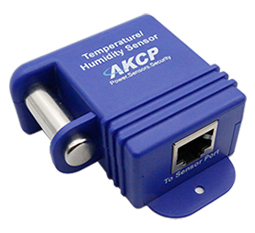
Excessive heat, if left uncontrolled, may swiftly bring a perfectly operating computer room to a standstill. Heat is produced by equipment, and rising temperatures might signify a variety of issues. A failed CRAC / CRAH or chiller unit, a leaking coolant line, lost utility power, or limited air circulation are all possible causes. Perhaps the increasing load on your freshly installed server pods needs more cooling.
AKCP Monitoring Solutions offers solutions for monitoring server room and server rack ambient air temperature. Temperature monitoring, on the other hand, does not guarantee the early discovery of the problem. Perhaps the server room heats up quickly, leaving you scurrying to figure out what’s going on. It might be the server itself, the power supply, the cold air supply, a plenum obstruction, a broken fan, or anything else. You’ll soon be pondering the possibility of shutting off servers before they overheat.
Although a spike in temperature indicates a problem, a data center environmental monitoring system may assist avoid problems from occurring in the first place. First, let’s look at the cooling system. Alarm fault panels are integrated into many CRAC / CRAH systems. These may be linked to any Sensaphone system to transmit an alarm if your cooling system detects an internal issue.
- Thermal Map Sensor
Datacenter monitoring with thermal map sensors help identify and eliminate hotspots in your cabinets by identifying areas where temperature differential between front and rear are too high
- Single Port Temperature and Humidity Sensor
In situations where both temperature and humidity can be critical, you can keep up to speed on the current conditions using this sensor. Combining temperature and humidity into one sensor frees up an additional intelligent sensor port on your base unit.
-
Wireless Temperature and Humidity Monitoring
Ensure that your environmental conditions are within required parameters, log, and graph data over time, and receive real-time alerts w

Differential Air Pressure Sensor
hen user-defined sensor thresholds are exceeded. Use as a data logger with data buffered and synchronized to the gateway when in range.
-
Differential Air Pressure Sensor
Differential Air Pressure Sensor installed on the Air Handling Unit Filter. When pressure drop across the filter is high filters are dirty and require maintenance. Sensors are wireless with 10-year battery life.
Wireless Pipe Pressure Sensors monitor the water or gas pressure and temperature on the input and discharge lines from the AHU.
-
Tank Level Sensors
Tank Level Sensors can monitor for liquid levels in fuel tanks, oil storage, chemical tanks, and so on. Any tank up to 2 meters in depth can be monitored. Alarms are generated when levels drop to critical levels, making sure you can re-fill with sufficient notice.
Conclusion
Cooling systems have always been a hot topic in the data center industry for various reasons. For one, they play a vital role in removing heat waste in facilities. So that data centers can operate smoothly 24/7. As well as prevent delicate IT equipment from overheating. Nowadays, there is a wide range of cooling equipment and systems available in the market. From basic fans to the most advanced cooling solutions. With the technology we have today, one can say that the possibility is endless.
Reference Links:
https://www.datacenters.com/news/data-center-cooling-future-of-cooling-systems-methods-and-technologies
https://www.digitalrealty.com/data-center-cooling
https://www.datacenterdynamics.com/en/analysis/cooling-theres-no-longer-one-answer/
https://www.upsite.com/blog/4-data-center-cooling-trends-that-will-continue-in-2020/
https://www.grandviewresearch.com/press-release/global-data-center-cooling-market

